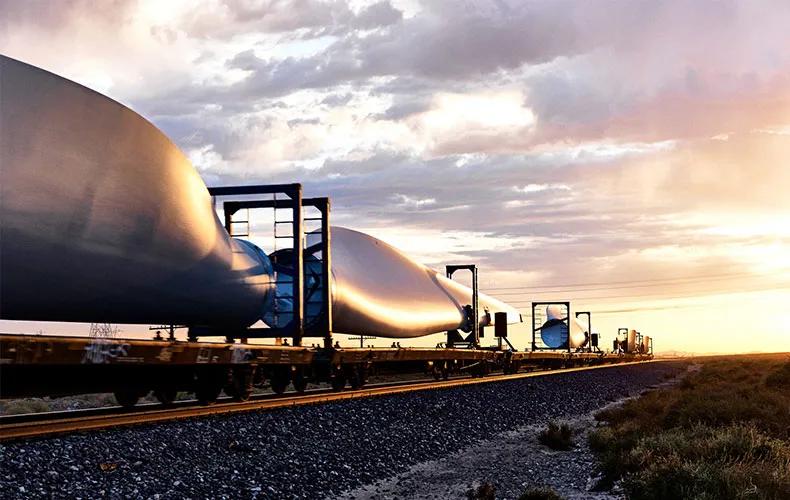Sustainable Syndicated Loans: Need for Expertise
2 August 2023
Reading time: 4 min
Sustainable Syndicated Loans: Need for Expertise

There are many reasons for companies to become more sustainable. But regardless of whether it is a question of transforming energy supply, reducing pollutant emissions, or responsibly designing production processes - in the end, a sustainable approach must always be economically feasible. To offer companies an additional incentive, banks like ING have developed a broad toolbox of sustainable financing solutions in recent years. On the one hand, these include instruments such as green bonds or green Schuldscheine that finance specific sustainable projects. In the case of sustainability-linked structures, on the other hand, the loan conditions are linked to the achievement of specific sustainability targets at the corporate level. What these sustainable financing instruments have in common is that they are designed to motivate companies to consistently pursue their sustainability goals.
Green financing is becoming the norm
There is growing interest: ING estimates that the majority of syndicated financings for their large corporate customers contains a sustainable element already. This means that there has been a significant change in mindset on the corporate side since ING issued its first ever sustainability-linked loan with the Dutch Philipps Group in 2017. Whereas back then the form of the loan was a special feature whose purpose had to be explained, today companies have to explain themselves if they do not use green financing forms as standard.
In the syndicated loan market, too, market participants are now highly interested in sustainable solutions. Syndicated loans are not provided by a single bank, but by a group of banks. For companies with regular financing requirements of more than EUR 100 million, this form of loan can be interesting.
On the one hand, the pooling of different banks ensures the availability of funds and, on the other hand, creates an alignment of interests on the part of the banks involved, because they know that all lenders receive the same terms and shoulder the risks jointly. Such syndicated loans thus strengthen the customer-bank relationship.
The example of filtration manufacturer Mann+Hummel shows how the requirements and design of syndicated loan financing have evolved in recent years. In 2016, Mann+Hummel used a syndicated loan with the participation of ING for acquisition financing for the first time. In 2017, this was converted into a revolving credit line with a term until 2024. As part of the refinancing, a sustainability component was integrated in 2022, in which the loan conditions were linked to the company's rating by the ESG rating agency EcoVadis.
Syndicate leader important partner for companies
The lead bank plays a special role in syndicated loan financing. The syndicate leader negotiates the terms of the financing with the borrower and helps develop an individual, customized documentation standard. This specifies, for example, the level of debt that the borrower may not exceed or the securities that must be provided. In parallel, sustainability standards are established for sustainable forms of financing, for example by developing measurable and ambitious KPIs for the borrower, for the negotiation of which a bank is usually appointed as sustainability coordinator. The borrower together with the sustainability coordinator informs the other banks in the consortium about the sustainability strategy and the selection of KPIs, for example in the form of an ESG presentation, so that the other banks can understand and accept the proposed sustainability linkage on the basis of this necessary background information.
Due to the different requirements, various units on the side of the lead bank have to work together across disciplines. ING therefore pools the expertise of the Loan Capital Markets, Sustainable Finance and Sector Specialists units in its Strategic Debt Platform. In this way, tailor-made solutions can be developed for the respective requirements of the borrower.
Sustainability will also continue to gain importance in the syndicated loan market. As part of the energy transition, infrastructure projects must be implemented, and new technologies developed. From 2025, the CSRD reporting directive will also require non-capital-market-oriented companies to report their detailed business strategy on sustainability, also reflecting ESG risks or influencing factors. Banks, for whom the development of appropriate solutions is part of their DNA, thus remain attractive partners for a sustainable business relationship.
Society is transitioning to a low-carbon economy. So are our clients, and so is ING. We finance a lot of sustainable activities, but we still finance more that’s not. See how we’re progressing on Opens in a new tabing.com/climate
Authors
Director Sustainable Finance
Stefan Zeller
Director Loan Capital Markets
Harald Loh
Do you have any questions or comments?
Well, then talk directly to one of our experts!
